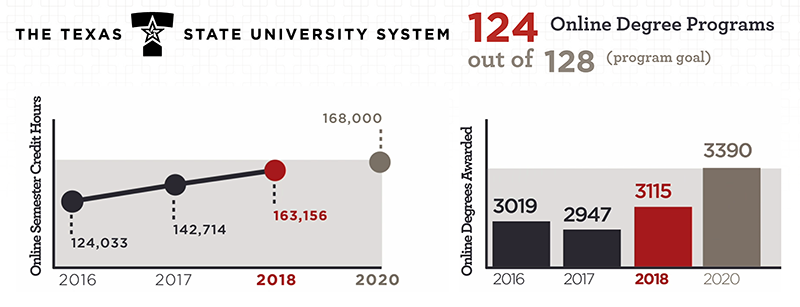A recent surge of higher ed chief administrator positions that involve spearheading web initiatives reveals that online learning is now mainstream. In 2016, nearly 25 schools created a chief online officer (COO) position, according to the third edition of the Changing Landscape of Online Education (CHLOE) Survey of these officers. Additionally, 57 percent of COOs (who have a range of titles) report their position did not exist prior to their appointment.
“Many institutions have relied on a variety of internal officers to shape online activity, but increasingly, these responsibilities seem to be coalescing around a single individual,” says Ron Legon, co-director of the CHLOE project.
For example, over 90 percent of COOs lead or share seven online responsibilities, such as faculty training and policy development. Meanwhile, approximately 75 percent report an additional 12 duties, including LMS support and regulatory compliance.
“Higher ed institutions are finding that it’s most effective to have an individual who collaborates with various departments and presents a common approach to online learning,” says Legon.
A closer look at a chief online officer
In Texas, the recent promotion of one university chief administrator to COO mirrors the CHLOE Survey’s findings. “I was elevated because of the growing importance of distance education here,” says Bill Angrove, the former director of online education at Texas State University System.
Since becoming director of the seven-university system in 2012, Angrove already shared many of the COO responsibilities listed in the CHLOE Survey.
Related UB Tech® event: “Seasoning Your Online Collaboration With Web and Video Conferencing”
Angrove’s new roles involve writing annual distance education reports for the system’s vice chancellor, chancellor and board of regents, and sharing every duty in the CHLOE analysis.
Angrove, who has also served as associate vice president of Sam Houston State University Online since 2009, recently spearheaded an effort to prepare 181 online sections of a shortened semester schedule for students affected by Hurricane Harvey.
Evolution of chief administrator positions: IT to academic

Similar to Angrove, surveyed COOs said that in their previous positions, they reported to CIOs. Since ascending to the COO role, 90 percent report to the university president or chief academic officer.
This comes as technology increasingly transitions to cloud commuting. “Rather than providing supports for on-campus tech, IT can now focus on other projects,” says Angrove.
Before joining Sam Houston Online, Angrove answered to both IT and academic affairs leaders. Now, he reports exclusively to academic officers.
As online learning takes center stage, colleges need to hire more staff to effectively manage distance education. A COO is therefore necessary to keep initiatives focused.
When Sam Houston employed Angrove in 2009, the university did not have any online staff. Angrove hired his team members over the past 10 years as online initiatives grew. He now directs 70 staffers.
“A quarter of our semester credit hours are generated online at SHSU,” he says. “It’s a very popular modality that students want. Adult learners don’t necessarily want to come to a campus anymore. They want their education to fit into their lifestyle.”
Find out more about online learning at “Seasoning Your Online Collaboration With Web and Video Conferencing,” a session at our UB Tech® conference, June 10-12 in Orlando.






